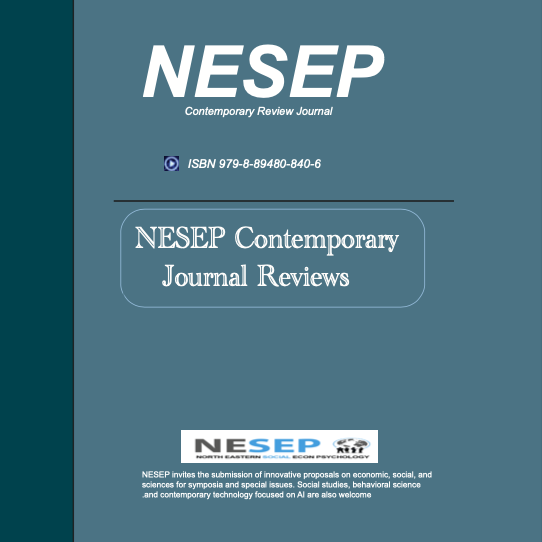Featured Issues
Below are compilations of selected work related to a contemporary matter area.

Palma, Spain. 6/30~7/2, 2025.
ISBN 2: 979-8-89480-848-2
Annual Conference
Publisher: NESEP
Dreaming Through the Lens of the Mind: A Neuropsychological Inquiry into Trauma, Culture, and Emotional Symbolism
Abstract :
Dreams create a special combination of emotional responses and memory storage and cognitive functions which enables researchers to study the subconscious mind through these dreams. The research investigates the author's dream story(attached in Appendix) about a drowning aunt and silent infants comparing other similar cases via article reviews to study how brain functions interact with psychological symbols and cultural elements during dream creation. The research demonstrates that dreams function as structured emotional narratives which help people manage their emotions and work through their hidden psychological battles. The brain activity during REM sleep specifically in the amygdala and hippocampus produces the dream content which includes strong emotional responses and memories. The dream contains symbolic elements which according to psychodynamic analysis represent hidden feelings of guilt and family duties and powerlessness. The research investigates how Korean cultural norms about family duties and gender roles affect the dream content to create a symbolic challenge against social expectations. The research combines multiple perspectives to demonstrate that dreams function as essential therapeutic processes which reveal ancestral trauma while enabling subconscious self-exploration of personal identity and strength. The research demonstrates that dream analysis requires a unified method to understand human mental processes.
References
- Braun, A. R., Balkin, T. J., Wesensten, N. J., Carson, R. E., Varga, M., Baldwin, P., ... & Herscovitch, P. (1997). Regional cerebral blood flow throughout the sleep-wake cycle. Brain, 120(7), 1173–1197.
- Choi, S. (2009). Gender, class and family in postindustrial Korea. Journal of Korean Studies, 14(1), 1–30.
- Courtois, C. A., & Ford, J. D. (2013). Treatment of complex trauma: A sequenced, relationship-based approach. Guilford Press.
- Domhoff, G. W. (2011). The neural substrate for dreaming: Is it a subsystem of the default network? Consciousness and Cognition, 20(4), 1163–1174.
- Freud, S. (1900). The interpretation of dreams. Basic Books.
- Hall, C. S., & Nordby, V. J. (1972). The individual and his dreams. New American Library.
- Hobson, J. A., Pace-Schott, E. F., & Stickgold, R. (2000). Dreaming and the brain: Toward a cognitive neuroscience of conscious states. Behavioral and Brain Sciences, 23(6), 793–842.
- Jung, C. G. (1964). Man and his symbols. Dell Publishing.
- Kim, H. J. (2018). Divorce and stigma in South Korean culture. Asian Journal of Women's Studies, 24(1), 34–50.
- Maquet, P., & Franck, G. (1996). REM sleep and amygdala. Molecular Psychiatry, 1(3), 195-196.
- Moon, S. (2002). The production and subversion of hegemonic masculinity: Reconfiguring gender hierarchy in contemporary South Korea. Gender and Society, 16(2), 312–335.
- Nielsen, T., & Levin, R. (2007). Nightmares: A new neurocognitive model. Sleep Medicine Reviews, 11(4), 295–310.
- Solms, M. (2000). Dreaming and REM sleep are controlled by different brain mechanisms. Behavioral and Brain Sciences, 23(6), 843-850.
- Stickgold, R. (2005). Sleep-dependent memory consolidation. Nature, 437(7063), 1272–1278.
- van der Kolk, B. A. (2014). The body keeps the score: Brain, mind, and body in the healing of trauma. Penguin Books.
- Wang, Q. (2013). The cultural foundation of human memory. Annual Review of Psychology, 64, 143–168.
- Yehuda, R., & Lehrner, A. (2018). Intergenerational transmission of trauma effects: Putative role of epigenetic mechanisms. World Psychiatry, 17(3), 243–257.